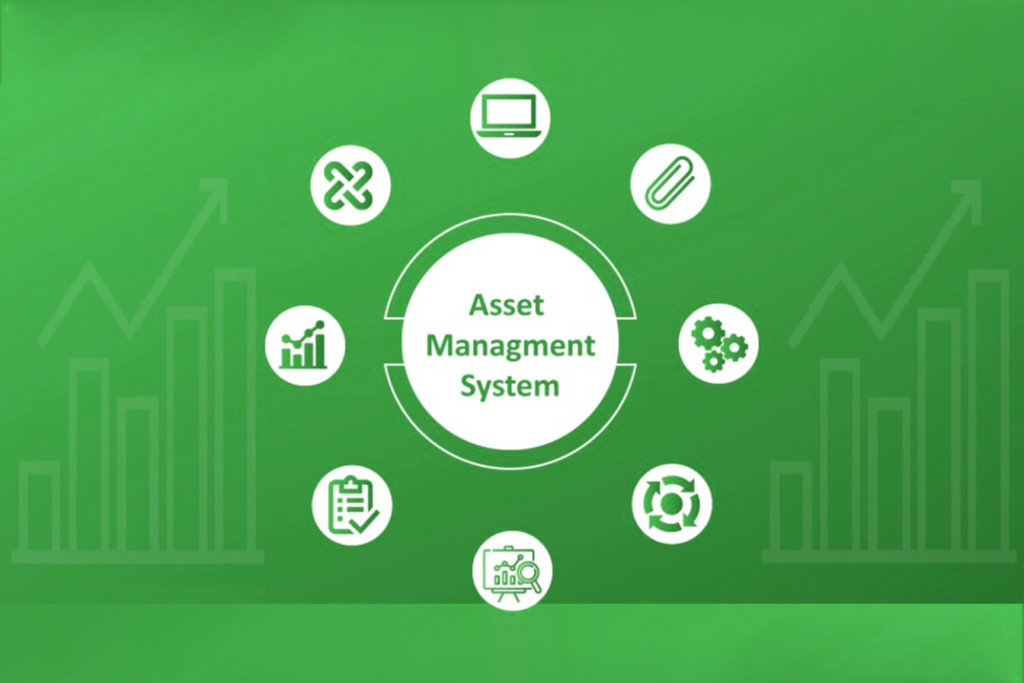
In today’s fast-paced and highly competitive environment, businesses across Australia are under increasing pressure to streamline operations, reduce costs, and maintain compliance. One of the most effective ways to meet these challenges is by implementing an Asset Management System in Australia.
An AMS helps organisations track, manage, and optimise everything from physical equipment and machinery to digital assets and even personnel. Whether you’re running a construction firm in Brisbane, a healthcare clinic in Melbourne, or a logistics company in Perth, the benefits of a well-structured AMS are significant.
Understanding Asset Management Systems

An Asset Management System is a centralised platform used to monitor and manage assets throughout their lifecycle – from acquisition and operation to maintenance and eventual disposal. It provides a structured framework for recording data, scheduling maintenance, and generating performance insights.
In Australia, where businesses often deal with large geographical distances and diverse compliance requirements, a robust AMS is especially valuable.
Common technologies used include:
-
Barcode scanners
-
RFID tags
-
Cloud-based AMS software
-
Integrated mobile apps for real-time updates
Assets can include:
-
Physical assets like vehicles, tools, plant equipment
-
Digital assets such as software licences, servers, laptops
-
Human resources through scheduling and time tracking integrations
Key Features of an Effective AMS
Asset Tracking
Track assets in real-time using barcodes, QR codes, or RFID technology. Know where every asset is, its usage history, and its current condition – whether it’s a laptop in the Sydney office or a truck in regional Queensland.
Maintenance Scheduling
Prevent costly breakdowns by scheduling regular servicing. AMS platforms allow for:
-
Automatic reminders
-
Preventative maintenance logs
-
Warranty tracking
Data Management
All data – including purchase details, depreciation, maintenance records, and location – is stored in one place. This ensures accurate asset valuation and easy auditing when required.
Reporting & Analytics
AMS software generates customised reports and dashboards to track:
-
Asset performance
-
Maintenance costs
-
Utilisation trends
This data supports smarter business decisions and budgeting.
Lifecycle Management
Manage the entire asset lifecycle:
-
Acquisition planning
-
Commissioning and deployment
-
Routine maintenance
-
Decommissioning and disposal
This holistic approach ensures you get maximum value from every asset.
Benefits of Implementing an AMS in Australia
Improved Operational Efficiency
Manual spreadsheets and outdated records can lead to errors and downtime. An AMS automates asset tracking, saving time and improving team productivity.
Cost Savings
Identify underperforming or idle assets, cut unnecessary expenses, and avoid unplanned repair costs. AMS helps reduce:
-
-
Equipment downtime
-
Duplicate purchases
-
Emergency repair fees
-
Regulatory Compliance
In sectors like mining, construction, and healthcare, compliance with Australian industry regulations and OH&S standards is non-negotiable. AMS platforms help meet those requirements by maintaining detailed records and service logs.
Better Decision-Making
When you’ve got accurate, real-time data at your fingertips, you can make informed decisions about when to repair, replace, or retire assets.
Greater Asset Visibility
Know what assets you own, where they are, and how they’re being used – even across multiple locations or remote worksites.
Real-World Applications in Australian Industries

Construction
Track high-value machinery, schedule safety checks, and prevent theft or misuse across multiple job sites.
Healthcare
Maintain biomedical equipment, manage service contracts, and ensure compliance with health regulations.
Logistics & Transport
Monitor fleet vehicles across Australia, track fuel usage, and ensure all servicing is up to date.
Education
Universities and schools can track IT assets, lab equipment, and furniture across campuses.
Example: A logistics company in Western Australia reduced asset downtime by 30% within six months of AMS implementation, simply by automating service reminders and improving inventory control.
Choosing the Right Asset Management System in Australia
When selecting an AMS, consider:
-
Scalability: Can it grow with your business?
-
Customisation: Does it suit your industry-specific needs?
-
Compliance support: Does it align with Australian laws and industry codes?
-
Local support: Is there access to support teams in your time zone?
Also consider whether you want an on-premise or cloud-based solution – cloud platforms are ideal for remote or multi-site businesses.
Steps to Implement an AMS in Your Business
-
Asset Audit: Catalogue all assets across your organisation
-
Set Clear Objectives: Define what you want the AMS to achieve (e.g. reduce costs, improve compliance)
-
Select Software: Choose a solution that suits your needs and budget
-
Training: Get your staff trained on how to use the system
-
Monitor & Optimise: Regularly review usage reports and refine workflows
Conclusion
Investing in an Asset Management System in Australia is more than just about tracking tools and equipment – it’s about empowering your business with the insights and structure it needs to operate efficiently, cost-effectively, and in compliance with regulations.
Whether you’re a growing SME or a large enterprise, the right AMS will pay for itself in saved time, improved visibility, and smarter decisions.
Ready to get started? Consider conducting an asset audit or speaking with a local AMS provider to explore your options.
EXCEED ICT can help you Optimise your hardware through our Platform and Enhanced Assets Management.
We also provide Expense Management, Telecoms Expense Management, Device Deployment, Mobile Fleet management, Telstra enterprise Mobility, Telstra mobility Managed Services.
Improve Your Business Core values, Business Consulting, App Development, Cyber Security, Cryptoloc, Network Management, Telstra Expense Management and many more Services. Check our Services.
Find Us (Exceed ICT) on Google map.



